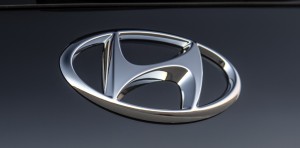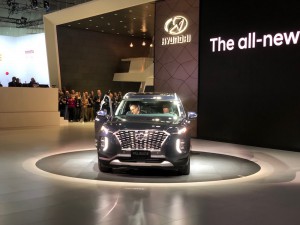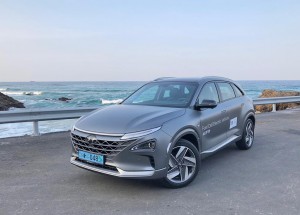
Hyundai is ready to unveil the sixth sport-ute in its portfolio in New York in April. Until last summer, the brand had just three utes.
Hyundai is making up for lost time – and hoping to regain lost market share – with an assortment of new utility vehicles, the next one set to make its debut at the New York International Auto Show in April.
Expected to be called the Styx in most global markets, the crossover is going to serve as the counterpoint to the new, three-row Hyundai Palisade, targeting the modest but growing subcompact CUV market targeted by the likes of the Ford EcoSport.
Hyundai sales have taken a hit during the last few years as the market has rapidly migrated from sedans and coupes to SUVs and CUVs, and it has rushed to respond with updates of existing models like the Santa Fe, as well as all-new utes such as the Kona and Palisade. Hyundai officials have openly promised to launch yet another model this year and global design chief SangYup Lee confirmed the Big Apple unveiling in a new interview with Motor Trend.
“It’s smaller and it’s distinctively different than Kona,” Lee noted, referring to the sleek compact ute Hyundai brought out early in the 2019 model-year.
(Hyundai goes big with new Palisade model. Click Here for the story.)
Where Kona opts for an aggressive, almost coupe-like appearance, Lee noted that the new CUV will opt for a “very, very distinctive two-box area (that has a) really fast profile, distinctive, iconic character … this one is almost very boxy, bold, bulldoggy character.”
That’s not entirely a surprise, and for several reasons. The more upright approach would help deliver more cargo and cabin space despite the new model’s tiny footprint. Hyundai’s design team would also be picking up on current trends that have seen many new models, such as the latest Ford Explorer, opt for more classic SUV shapes, rather than squishier soft-roader looks.
The new model targets the A-segment, a tiny niche in the U.S. market but a segment that is gaining ground, especially in markets like Europe and Asia. Such products offer some advantages in heavy traffic and where parking spaces are tight. They’re also more affordable, which helps explain why the latest Hyundai offering is expected to go on sale right about the same time it makes its official debut at the New York show. Hyundai’s Australian team has confirmed it will go on sale there by the end of 2019.
(Click Here for more about Hyundai investing $388 million into U.S. engine plant.)
Lee and others haven’t talked much beyond that in terms of the global roll-out but they’ve made it clear the ute will come to the American market. What it will be called here isn’t certain. It original debuted at the Delhi Auto Expo in 2017 in the form of the Carlino concept. And it was known inside Hyundai by the codename QX. We’ll have to wait to see what it’s dubbed here, if Hyundai decides not to go with Styx.
As for some of the basics, it will come in under four meters, or less than 157 inches, nose-to-tail. That would made it at least seven inches smaller than the Kona and four inches shorter than the Ford EcoSport – which is imported from India.
Several different powertrains will be used worldwide, including a 1.2-liter gas engine, and a 1.5-liter diesel. There’s been no mention of any all-wheel-drive system.
With the addition of the Styx, Hyundai will go from having just three utility vehicles to six in short order. That includes the latest updates of the Tucson and Santa Fe, as well as the new Kona and Palisade model – and, rounding out the list, the low-volume, hydrogen-powered Nexo. You could even say seven models if you count the all-electric Kona EV as a distinct model.
(To see more about the Hyundai Santa Cruz pickup set to debut in late ’20 or ’21, Click Here.)
As for pricing, the base version of the new ute is likely to come in around, and perhaps even just under $20,000, giving some room for Kona which starts at $23,500.


